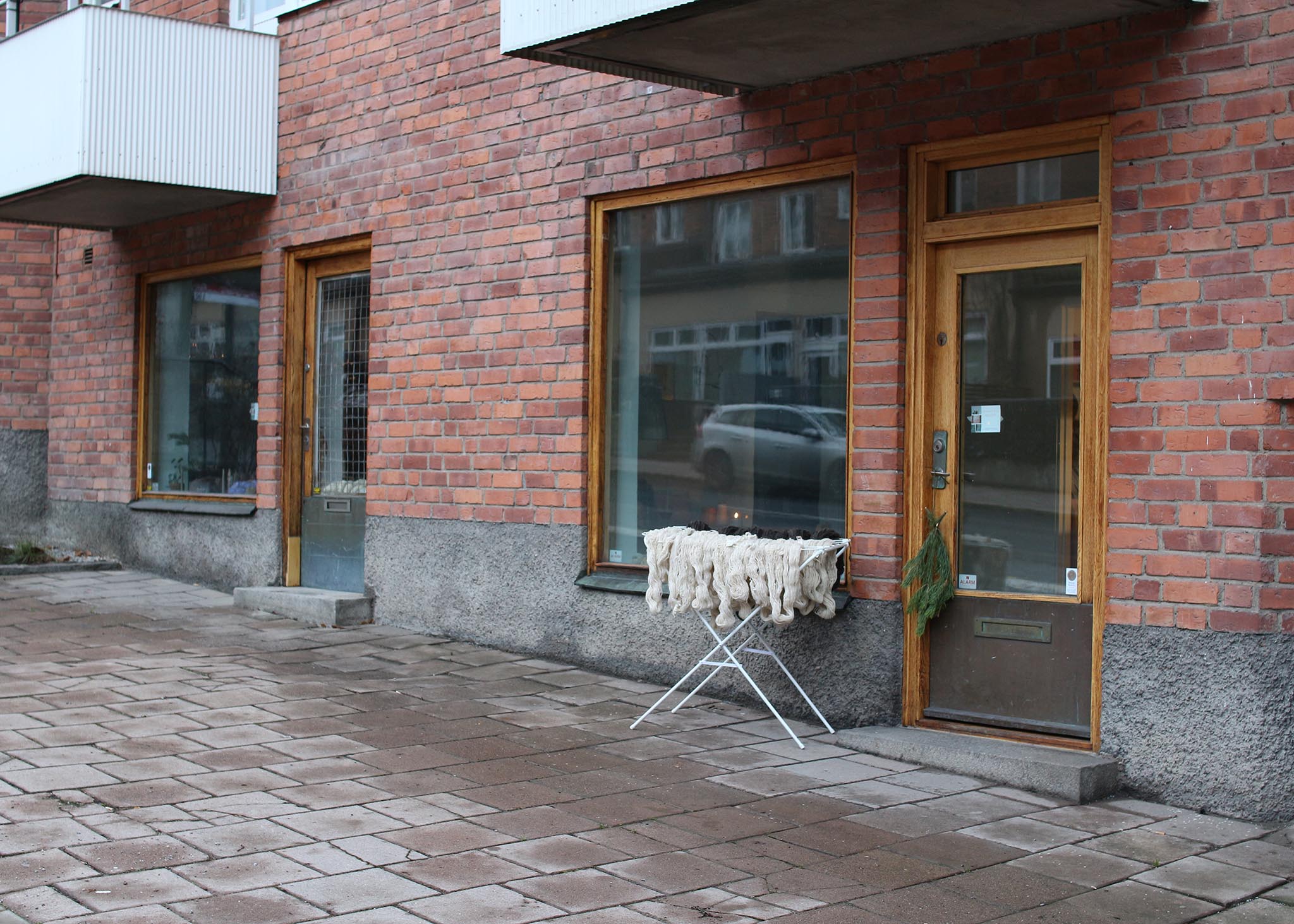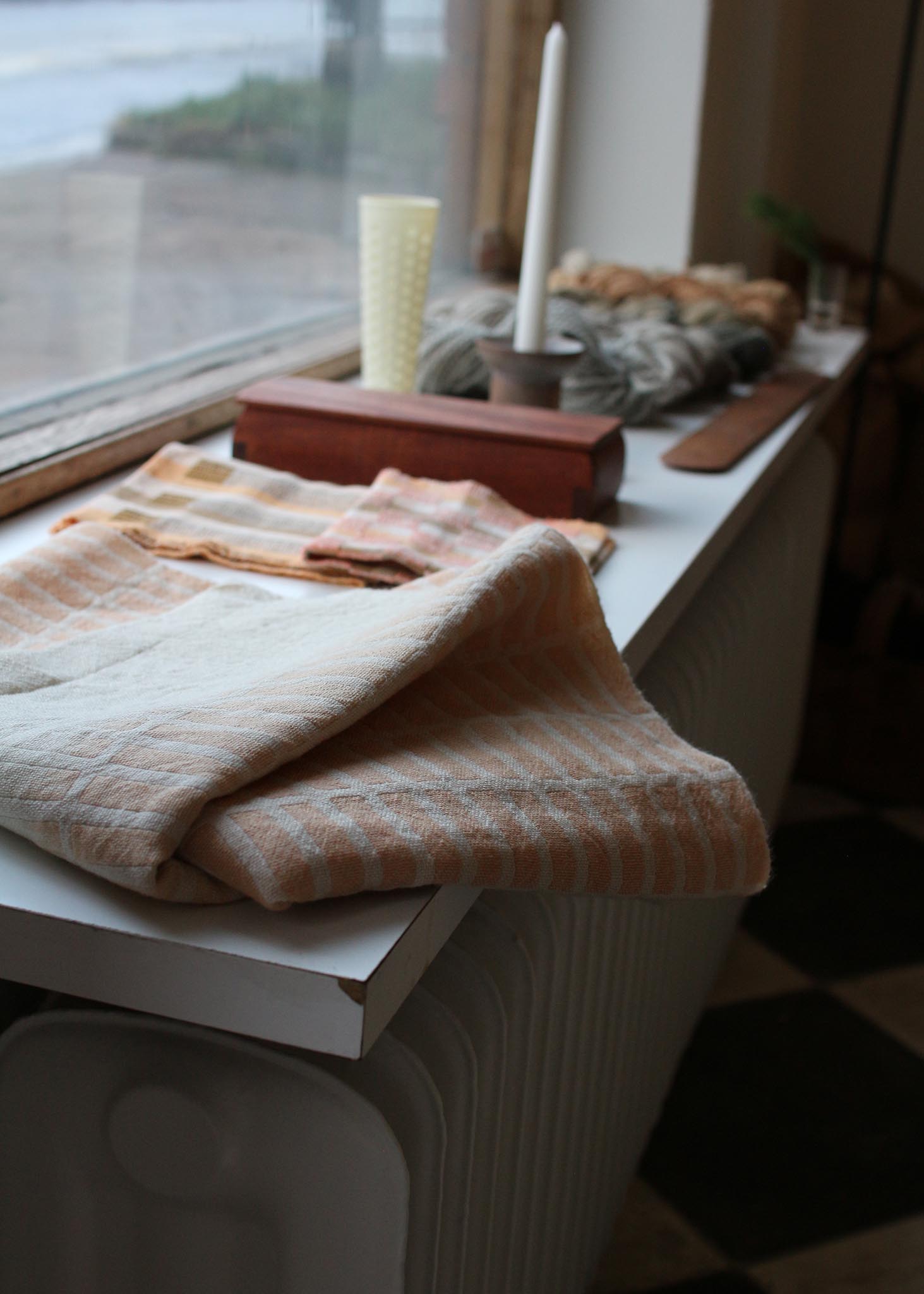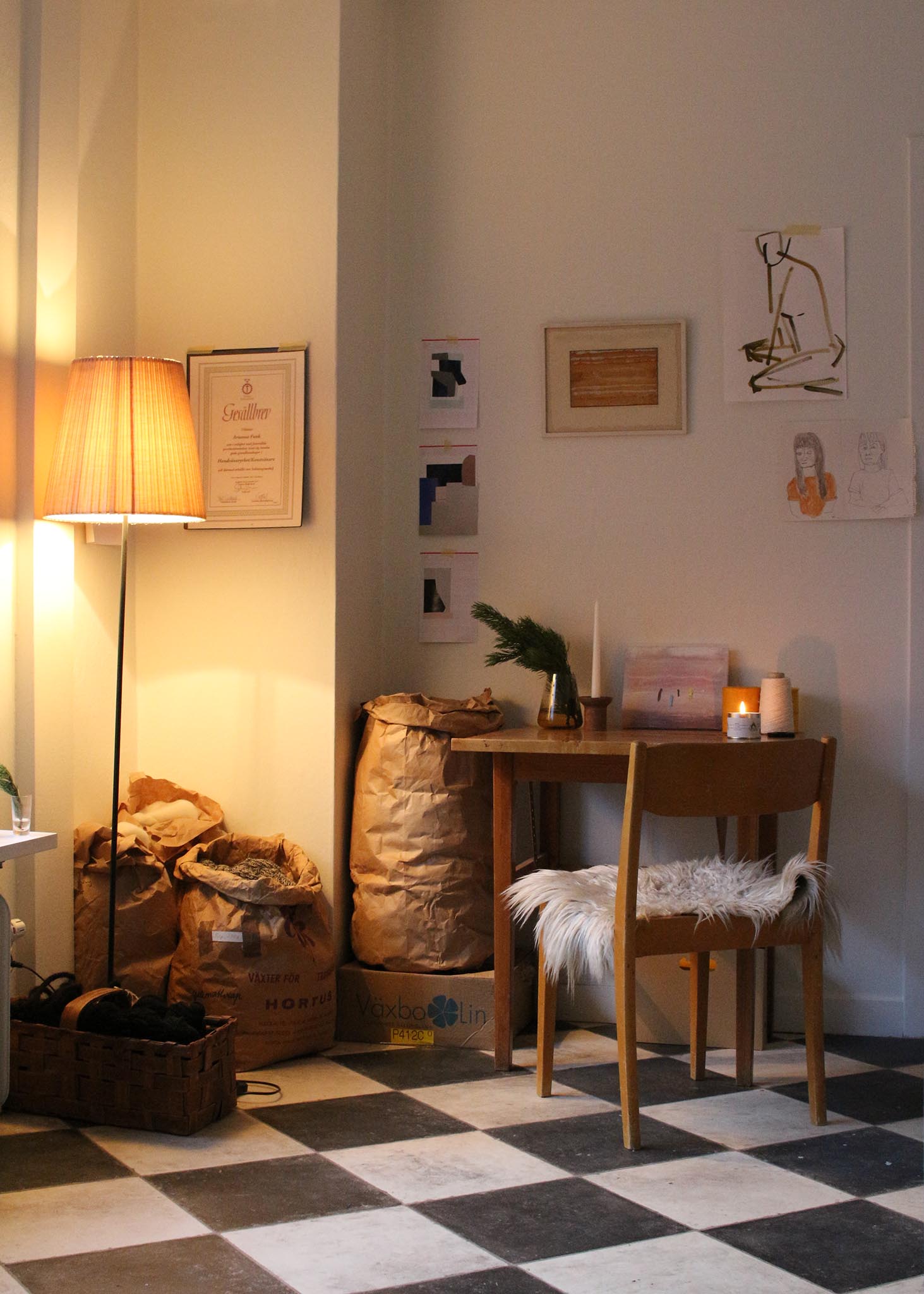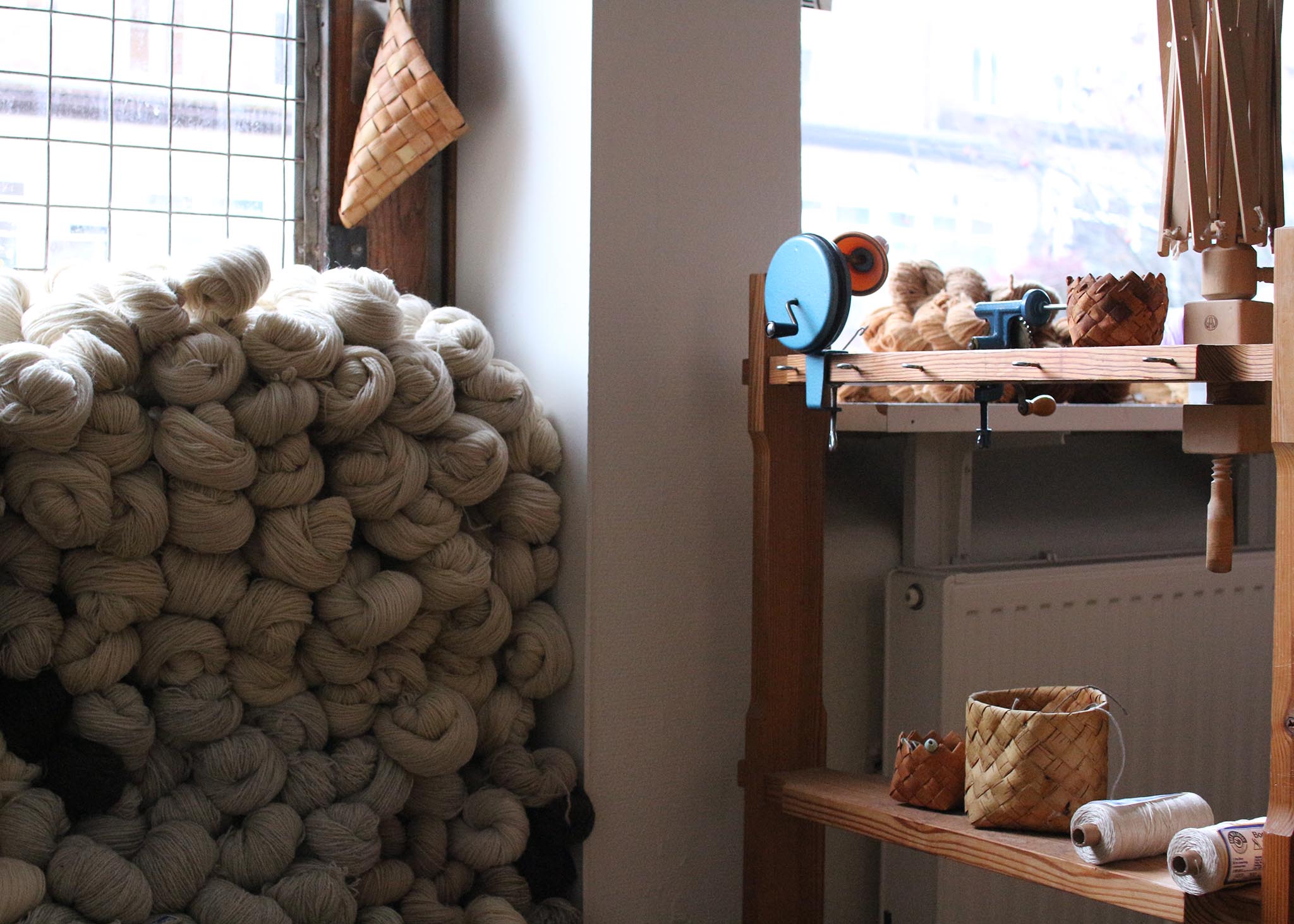Shopping Cart
*continental US addresses only
*continental US addresses only
Your Cart is Empty


Arianna Funk graduated from Friends of Handicraft School in Stockholm in 2017, became a card-carrying journeyman weaver the same year and was awarded the large medal of honor for her journeyman work. She is a founding member of Studio Supersju, a group of forward-thinking weavers. In addition to running Weave of the Month Club, she is a teacher and advisor for students in the foundation year at Friends of Handicraft and writes drafts for Väv Magasinet and Svensk Hemslöjd. Her work is currently on view in the Studio Supersju group show “Butterfingers” at Konsthantverkarna Gallery in Stockholm, and will be in an upcoming Studio Supersju exhibition this March at Västernorrlands Museum in Härnosand. Photo by Campher Image.


1. You recently moved into a new studio space! Can you tell us about the new space and some of the projects that you have been working on this year?
I moved in in September to be closer to where my son goes to school and to expand. I've been working full time on the book I'm writing with my Studio Supersju colleague Miriam Parkman, called Att Väva (To Weave). You can read more about it below!
In addition I've been working on the final projects for Weave of the Month Club 2019 and opened membership for 2020 in early December. Read more about that below too.
And on top of all that and making works for our coming exhibitions, I write patterns for Väv Magazine and you lovely people at GIST! So it's mostly sampling and weaving up projects, but not the kind of production I thought I was going to be doing when I started my company. I'm looking forward to doing more product development next year in addition to writing all those patterns. It's just so fun to write drafts, knowledge is power and I love to spread that weaving power.
I've just "inherited" a 7.5 ft rug loom from the estate of textile artist Hjördis Jansson, and I can't wait to invite six of my most patient, beefiest friends to set it up. It's a really simple loom, but is as sturdy and crazy heavy as professional rug-weavers need it to be.


2. We first heard about Studio Supersju on Episode 48 of the podcast. For those who have not yet listened to the episode, could you tell us about Studio Supersju and what your goals are as a group and for the handweaving community?
Studio Supersju is a group of seven weavers at the beginning of their careers. We started the group because we were sharing a studio and realized there is strength in numbers, especially having chosen a craft that is both a niche and also has been seen as a hobby for many decades. Our work is grounded in the deeply rooted traditions of Scandinavian weaving, but we want to bring weaving into a new era and create new contexts for the craft. We all have our own companies and artistic practices, and most of us have since moved out of the original shared studio, but we continue to exhibit frequently as a group. If you're in Sweden next year, we have an exhibition at Konsthantverkarna in Stockholm and one at Västernorrlands Museum in Härnosand, among other places.


3. What is it like working collaboratively with the other members of Studio Supersju? Do you typically work together or independently?
I actually love working by myself! One of the reasons for moving is that when I'm working I want to be by myself. It makes me more grateful for the times when I have collaborators over for meetings and discussion, and for the existence of Studio Supersju. The social spirit of being in my former studio with many of my SS7 colleagues was so great, you feel like you're part of something big. Having that context is really important when you've chosen a career that requires quite a bit of ambition and stick-to-it-iveness; your studiomates help you stick to it in good times and bad.
We don't really work collaboratively on projects, it's more that we maybe all make new works for a coming exhibition and that might have a theme. Even when we all sat in the same studio it was really important for us to be able to maintain our own creative processes. We'll see what the future brings!
Each of us has our own constellation of jobs and interests. One is a full-time weaver for an artist and works as more of a "craftsperson" for the time being. Two of us are full-time weavers and artists, two are in Master's programs, one is on maternity leave, and one has an exciting part time job that she balances with studio time. We all identify first and foremost as weavers, artists, or a combination of the two. Only five of us currently live and work in the Stockholm area, and as many as possible of us meet every month or so. We also have a very lively Slack workplace as an attempt at creating order in the wonderful chaos of all of our current projects and plans for the future.


4. As mentioned above, you and Miriam Parkman are the co-authors of a new weaving book called Att Väva. Can you tell us about the book and the process of writing/designing patterns for it?
It all started because we have both wanted to write a book about weaving for a little while, and we had both noticed that there were tons of craft books coming out here all at once...but hardly any weaving books have been come out in the past decade. The book has a really modern aesthetic, we wanted to get away from the gentle, therapeutic, ultra-feminine side of weaving, and show a different way of approaching the craft.
We want to welcome everyone to weaving and show that there are plenty of different ways of weaving--everyone should do it just the way they feel--you don't have to have perfect selvedges or weave the same stuff everyone else weaves....unless you want to! But those books already exist, and we think more people will weave if they feel like there's no one "best" way to do it, and that you don't have to be an expert from day one. Miriam and I went to the same weaving school, sat next to each other in our shared studio for a few years, and our work--but especially our artistic processes--are really different. In hindsight we did in a sense fulfill that goal of writing our own weaving book; we got to focus on the topics and projects that most interest us, but our different roles and interests complement each other and make for a compelling book.
In addition to 15 different projects, we've written an introduction to weaving the Swedish way, dyeing without a recipe, and how to tap into your own way of sketching. Most of the projects are on 4 harnesses, with a few exceptions.
Att Väva comes out March 27, 2020 in Swedish, and hopefully in English soon.

5. Weave of the Month Club 2020 just started earlier this month--what have you learned/enjoyed from WOMC 2018 and 2019? What are your plans for WOMC this year?
Weave of the Month Club is a subscription service where all members get a new digital draft in their email inbox every month, in either English or Swedish. I also offer an ANALOG membership for those who also want a sample handwoven by me and a color card with the yarns used sent to their mailbox every month. The patterns are inspired by Scandinavian traditions but intended for modern lifestyles. The patterns can either be woven up precisely as written or seen as inspiration for looking at traditional patterns in a new, fresh way. There are unlimited digital memberships available, but the ANALOG memberships are more than halfway sold. I've got a mix of old and new members this year, which is so exciting.
I've learned a ton about communicating weaving. I write all the patterns in Swedish and translate into English, yards, pounds, and inches, since Swedish is the language I learned to weave in. The patterns aren't so different in each language, and I ask a lot of my members: they receive a short introduction to Swedish weaving (and of course troubleshooting help via email with me!) but I am so impressed that they take these patterns on, even though everything is written backward and upside down.
I'm not planning any big changes for 2020, a few tweaks of the website and lots of administrative changes to streamline the process even further. I want to keep the price relatively low--although I do understand that it might not feel like a low price to everyone--because this is about the spread of knowledge and of experience. I love the idea that Swedish weaving traditions are making their way to Australia and all over Europe and North America.

6. What is your advice for handweavers who are interested in starting their own business and weaving full time? What are some of the challenges you have faced?
This is a little hard for me to answer because owning a small business here in Sweden is probably very different than owning a business in many other countries. I'm very grateful for the support that we get as parents here, that I pay very little for health insurance, that there are lots of scholarships to apply for. And I've been extremely lucky timing-wise, as interest in handcraft and especially in textiles and weaving here in Sweden is high right now. However, I do think my colleagues in Studio Supersju and I (and many of our contemporaries) have truly succeeded at identifying and capitalizing on that zeitgeist as well as expanding the definition of weaving and where it belongs.
1. So my advice is definitely to start some sort of collective of like-minded people with whom you can share some sort of burden/expenses/skills/etc. You are so much more visible as a group, and maybe then you don't have to do 100% of the work by yourself. And you have a built in group to celebrate your successes with!
2. Work on shine theory.
3. I get asked constantly if it isn't difficult to make a living as a weaver. Such an unnecessary bit of schaudenfreude (see #2). We all know it's hard--no one will let us forget it!--but my last bit of advice is to not believe it. Being honest with yourself about the challenges of owning a small business, especially a creative small business, should be something that spurs you on, not drags you down. Of course I feel way overwhelmed sometimes and while I was writing the book I was working 8-4, hanging out with my son 4-8, and then working 8-midnight. That's not very Swedish of me, and it was a bummer. But opportunities like the book are spaces I and my colleagues have dug out for ourselves, and I wouldn't have it any other way. It feels pretty amazing to have both created the opportunity and then have brought the project or the exhibition or whatever all the way home. Speaking of which, 3.a: if you have a partner you share your life with, keep the lines of communication wide open. While you don't have to ask for permission to make your vision a reality, a realistic conversation with your person about what your life may look like when you start that business is necessary. You'll need a lot of support, and they may not also be able to say "I wouldn't have it any other way".
